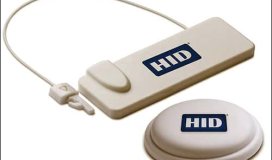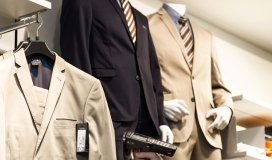Minnesota family-owned grocer Lunds & Byerlys has rolled out a passive ultrahigh-frequency (UHF) RFID-enabled solution to ensure the freshness of its products, and to help meet food-safety mandates. The retailer installed the SureCheck Food Safety Solution, from ParTech, at all 26 of its stores in January 2016, and says the system has helped to confirm that each store and every cooler meets federal and local standards requirements for temperatures. The company uses the technology to track the temperatures, as well as to automate the recording of data during safety checks that employees would otherwise need to carry out manually.
In 2011, the FDA Food Safety Modernization Act (FSMA) made requirements for food safety more stringent than they were previously. FSMA aims to assure that the U.S. food supply is safe with regard to contamination, by shifting the focus from response to prevention. Lunds & Byerlys and most of PAR's customers have implemented Hazard Analysis and Critical Control Points programs (HACCP) to accommodate the standard.
Typically, food retailers must track temperatures several times, or at least once a day, in order to meet food-safety standards. Companies document the temperatures at which food is stored for their own temperature-management purposes, as well as to provide that information to government authorities when needed. If temperatures fall outside of acceptable thresholds, food may need to be discarded.
"With the rollout and implementation of the FSMA, many resources in the grocery industry have been strained in order to meet compliance deadlines," says Chris Gindorff, Lund Food Holdings' senior manager of quality assurance and manager of food safety.
Lunds & Byerlys owns 26 upscale supermarkets in the Minneapolis-St Paul area, each containing a bakery and a deli. Its core focus is on the quality of its products, the company reports, including the freshness of the food that it stores, to meet the needs of its customers.
The frequency of temperature measurements depends on the specific checkpoints that the firm has put in place. "We typically see measurements taken every two hours," says John Sammon III, ParTech's senior VP and general manager for SureCheck. Without an automated system in place, Sammon explains, the process typically requires pen and paper. Many food retailers simply keep records of temperature checks in binders.
Last year, Lunds & Byerlys began working with ParTech on an automated solution to make the process of tracking the temperatures of its fresh food more automated. ParTech's software-as-a-service (SaaS) solution consists of SureCheck Advantage (SCA) units with temperature sensors and built-in readers developed in-house. The system also comes with two types of high-frequency (HF) 13.56 MHz RFID tags—one battery-powered device with built-in temperature sensors from Phase IV Engineering, and another passive tag with simply a unique ID number.
The temperature sensor tags can automatically capture temperatures at programmable intervals down to every five minutes, once installed within coolers and freezers. That data can then be retrieved using a handheld SCA device that reads each tag's ID and the related sensor data. The SCA serves as an all-in-one handheld device, providing IR-based temperature sensors, tethered temperature probes, a camera and an RFID reader, with a built-in Android operating system.
To read temperature tags, the SCA is placed within a few centimeters of them, in order to capture the reading and the tag IDs. Non-temperature RFID responders (tags) can also be used as proof of location. In some cases, foods must be probed for internal temperature. To conduct such safety checks, a user can log into the SCA and provide his or her own identity, as well as any other information, such as where the measurements are being taken. That user ID is then saved in the cloud, along with a timestamp.
The employee then holds the SCA unit within read range of a passive HF SureCheck tag that is installed in the cooler. The tag ID is forwarded to the software via a Wi-Fi connection, and the software then prompts the SCA to display a checklist for the user to capture specific probe-based temperatures. When he or she does so, those measurements are also sent to the cloud-based software automatically.
More info visit rfidjournal.com



